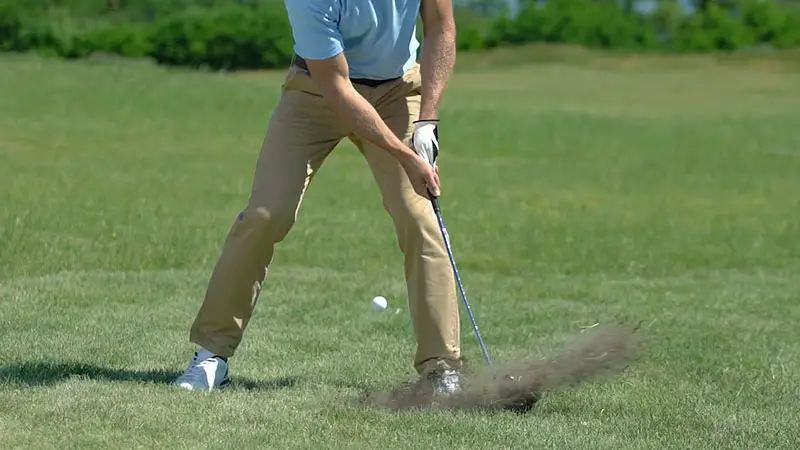In the world of golf, the term “mulligan” represents a cherished tradition among casual players. A mulligan offers a golfer a second chance to replay a poor tee shot without any penalty, turning a frustrating moment into an opportunity for redemption.
While the official PGA rules strictly prohibit mulligans, they thrive in friendly games and charity events, adding a layer of fun and camaraderie to the sport.
Interestingly, mulligans come in different variations, such as the Must Mulligan and the Provisional Mulligan.
The Provisional Mulligan, for instance, allows players to choose between their first shot or the second, whichever is better. This flexibility makes it a favorite among golfers looking to balance fun and a bit of strategy.
Whether it’s for a laugh or a serious do-over, mulligans inject a sense of levity and mental relaxation into the game, making golf not just a sport but a social experience.
What Is a Mulligan in Golf?
A “mulligan” in golf is a term used to describe a do-over or a second chance shot. It’s an informal rule that allows a player to replay a stroke, usually after hitting a poor shot, without counting the stroke against their score.
The Concept Explained
A mulligan in golf is a practice where a player retakes a shot without incurring a penalty, usually following a poor tee shot.
The term stems from the informal context of the game, originating from stories about golfers like David Mulligan who, in humorous accounts, took a second shot after a problematic first stroke.
Mulligans aren’t recognized by the official golfing rules set by the USGA or PGA. Instead, they’re used in casual games and charity events, enhancing the enjoyment and social aspects of the sport.
This do-over option allows golfers to replay an opening shot and continue the game from the new ball’s location, without adding strokes to their score unless agreed upon by the players.
Common Misconceptions
Common misconceptions about mulligans often arise from misunderstandings of their informal nature. A widespread belief is that a hole-in-one on a mulligan counts as an official ace, but it doesn’t since the first shot still stands in formal records.
Another misconception is that mulligans can be taken anytime during a game. However, they’re typically reserved for tee shots.
Additionally, players might assume that mulligans are part of the official rules, which they’re not. The official game rules, followed in professional and amateur competitions, do not permit mulligans, reinforcing their role solely in casual and friendly matches.
Origin of the Mulligan
The origin of the term “mulligan” in golf is shrouded in a bit of mystery and folklore, but it’s often attributed to a Canadian golfer named David Mulligan. The story goes that Mulligan was playing a round of golf in the 1920s and hit a poor shot off the first tee.
John A. Mulligan
The story of John A. “Buddy” Mulligan involves his time as a locker room attendant at Essex Fells Country Club in New Jersey during the 1930s. One day after working all morning, Mulligan joined a game without warming up, resulting in a poor tee shot.
He argued that since his playing partners had practiced all morning while he was working, he deserved a do-over. They agreed, and word spread about the “mulligan,” leading other members to adopt it.
David Mulligan
Another theory centers around David Bernard Mulligan, a Canadian amateur golfer and hotelier from the 1920s. According to the USGA, David’s story comes in three versions.
One suggests he hit a poor drive off the first tee, re-teed, and hit another ball, calling it a “correction shot.”
Another claims Mulligan had a rough car journey to the course, leaving him jittery on the first tee, which led to his request for a second shot.
The third story recounts David running late, missing the warm-up, and being granted an extra shot to compensate.
An Unfriendly Nickname for Irish Players
A less pleasant theory suggests that the term “mulligan” originated as a derogatory reference to the growing number of Irish players on American golf courses.
At the time, these players were perceived as inexperienced and inefficient, leading to the nickname. While this theory reflects historical prejudices, it highlights the diverse and sometimes contentious origins of the term.
Although it’s important to acknowledge these historical contexts, the modern use of “mulligan” in golf is largely positive. Today, it represents a second chance or a free do-over, embodying the sport’s spirit of fairness and camaraderie.
Rules and Etiquette
Rules and etiquette are essential aspects of golf, contributing to the integrity and enjoyment of the game.
Here’s a breakdown of both:
When to Take a Mulligan
A mulligan provides a second chance on the golf course, letting players replay a poor shot without penalty.
Informal golf games commonly allow mulligans on the first tee shot. Limiting mulligans to one per round is a standard practice, ensuring the game maintains its competitiveness.
Social rounds and friendly matches find mulligans more acceptable compared to official tournaments, where they’re strictly prohibited by the United States Golf Association (USGA).
Etiquette for Requesting a Mulligan
Requesting a mulligan involves clear and respectful communication with fellow players. A player should announce their intention to take a mulligan immediately after hitting a poor shot.
Visible gestures, like raising a hand or making eye contact, help signal the request. Before starting the round, players should agree on the conditions and limits for mulligans to prevent disputes.
Using a humorous approach, such as a “Mulligan Excuse Card,” can add a fun element to the game, enhancing the social experience without causing frustration.
Mulligans in Different Contexts
“Mulligans” can extend beyond the realm of golf and find application in various contexts, often symbolizing second chances or opportunities for a fresh start.
Here are some examples:
Casual Play vs. Tournaments
In casual play, golfers often permit mulligans to keep the game enjoyable and reduce frustration from poor shots. Players typically agree on the number and conditions beforehand.
For instance, some may allow one mulligan per nine holes or only on the first tee shot. This flexibility helps maintain a light atmosphere.
In contrast, tournaments follow strict rules established by the USGA, which do not permit mulligans. Professional and amateur competitions prioritize fairness and skill, making do-overs incompatible with official play.
Using a mulligan during a tournament can lead to disqualification, emphasizing the importance of adhering to official regulations.
Geographical Variations in Rules
Mulligan practices can vary by region. In North America, informal golf games often view mulligans as a common practice, especially among weekend golfers.
Players might even have local customs dictating various uses, such as “breakfast ball” for the first tee shot of the day.
Conversely, in regions with a strong adherence to traditional rules, like the UK, mulligans are less common, even in casual play.
Players in these areas prefer to follow a more purist approach, aligning closely with official golf regulations, regardless of the game’s formality.
Frequently Asked Questions
When is it appropriate to take a mulligan?
Mulligans are typically allowed in informal or casual games. They are often taken on the first hole or during particularly bad shots, but it’s important to agree on the specifics with your playing group.
Do all regions allow mulligans in casual play?
No, mulligan practices vary by region. In North America, mulligans are commonly accepted in informal games, while regions like the UK adhere more closely to traditional rules, even in casual play.
Can mulligans enhance the social aspect of golf?
Yes, mulligans can enhance the social aspect of golf by reducing frustration and keeping the game enjoyable. They allow for a more relaxed atmosphere, promoting camaraderie among players.
How many mulligans are usually allowed in a casual game?
The number of mulligans allowed can vary. Some groups allow one per round, some one per hole, or a specific number per game. It’s essential to agree on the limits beforehand.
What is a “Mulligan Excuse Card”?
A “Mulligan Excuse Card” is a humorous way to request a mulligan. Players can use these cards to lighten the mood and add fun to the game when asking for a do-over.
Conclusion
Mulligans in golf add a unique twist to the game, offering players a chance to recover from poor shots and maintain a fun atmosphere in informal matches.
While not recognized by official rules, they bring a social element that many golfers appreciate. Understanding the etiquette and setting clear agreements on their use can enhance the enjoyment of casual rounds.
Whether in North America or elsewhere, the approach to mulligans varies, but the underlying goal remains the same: to keep the game engaging and enjoyable for all players.
For beginners, mulligans also provide a valuable opportunity to practice and improve skills without the pressure of competition.
It’s important, however, to use them sparingly to maintain the challenge and integrity of the game. Always discuss the allowance of mulligans before teeing off to ensure a fair and friendly round.








Colin McCarthy